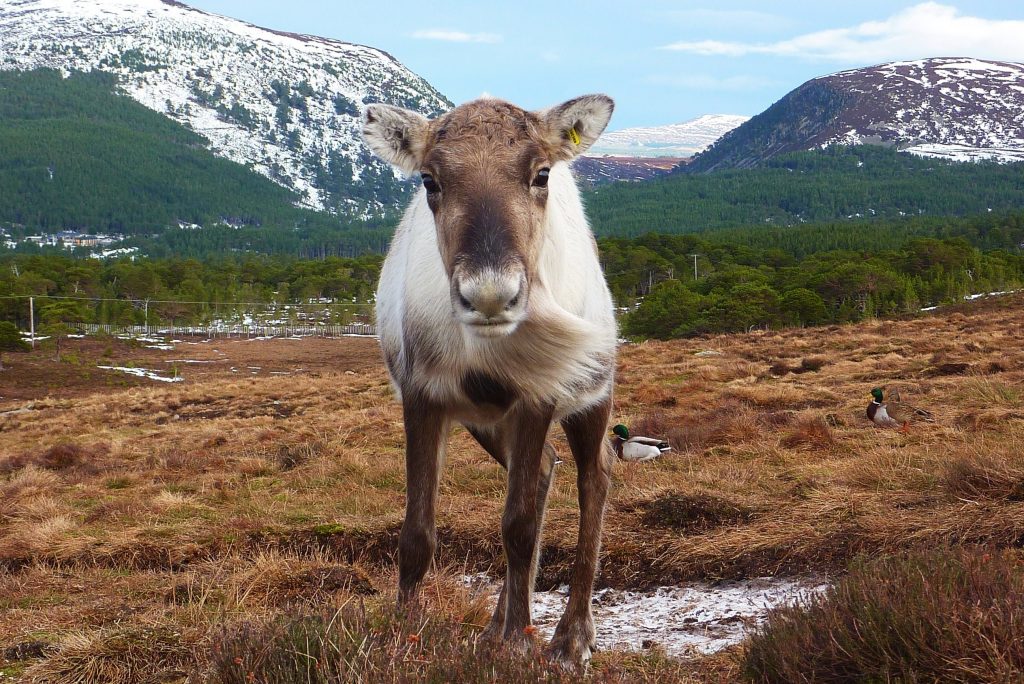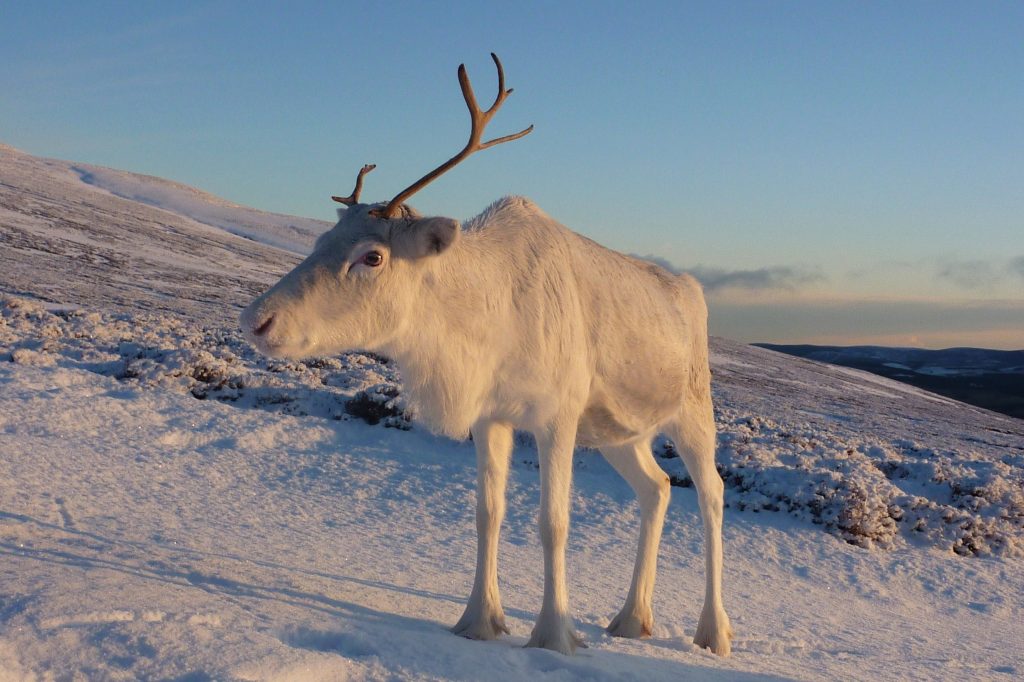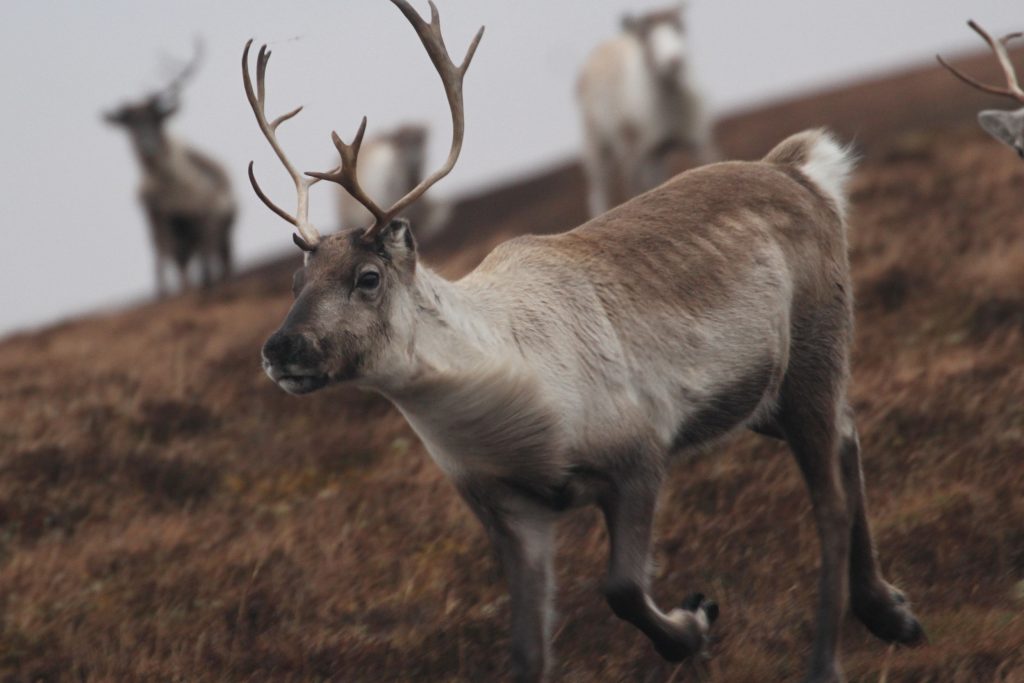Just like humans, reindeer come in all shapes, sizes and colours so here are some of the reindeer in our herd who stand out from the crowd. Whether they grow no antlers, are pure white (which is very rare) or maybe part of their body isn’t quite ‘the norm’, they still fit into the herd just like all the others absolutely fine. If anything it makes them very easy to identify to us herders.
I have split this blog into two parts telling you about the females first and in part two I’ll tell you about the male reindeer. Turns out we have a few quirky reindeer in the herd it’s worth the split. I won’t go into quirky reindeer herders or I’d be here all day 😉
Malawi:
At the age of 13, Malawi has been around for a long time. She is fairly aloof in her character and not one to be in your face at hand feeding time. She likes to keep herself to herself. Malawi has never grown any antlers. This isn’t uncommon with female reindeer and in the past we have had a few reindeer not grow any antlers – Arnish and Diddly to name a couple. We have also had cases where certainly females haven’t grown any antlers, then one year they decide to grow one antler. This was the case with Cheery and Ferrari. I think Ferrari was 9 years old when she grew her first antler. This doesn’t seem to affect their position in the herd when it comes to dominance and certainly with Arnish I would say she was one of our more dominant females in her days. I guess when you don’t have antlers to push the other reindeer around you have to think of other ways and Arnish was more like a bulldozer at times, head down and move them on with brute force and confidence. It seemed to work for her! Malawi is now the only reindeer in our herd with no antlers but I’m sure once she has gone there will be more to come so we will wait and see!

Blondie:
She is an old girl now at the age of 12 years and she was actually one of the first ‘pure white’ reindeer to be born into our herd. This is an rare condition within reindeer and it is called Leucism. I believe cats can also be leucitic. With this condition it does mean that Blondie is completely deaf. We have tested this theory many times when we arrive to the herd, very chilled out and relaxed and Blondie is in fact fast asleep. Where the other reindeer wake up when they hear us coming Blondie is still flat out asleep and eyes closed. Until we wake her up gently, so she doesn’t get a fright. Of course in the wild this would be a massive disadvantage as they wouldn’t hear predators coming or even when they are a calf they would hear their mother calling but having got to the age of 12 Blondie has obviously coped well with her deafness and it doesn’t seem to slow her down. Other pure white and deaf reindeer have included Lego and Blue who are no longer with us.

Meadow:
Meadow has no ears… She wasn’t born like this, this happened when she was a calf on the free range with her mother Maisie. Sometimes when reindeer fall very ill and maybe we aren’t around to give assistance because the herd are free ranging, this can go one of two ways. Their bodies may not be able to cope with the illness in which case they pass away but on the other hand they may be fighters and battle through, even though their body suffers for it. In Meadows case she battled through something (we aren’t sure what) and as a result her body stopped the blood circulation to other parts of her body which didn’t necessarily need it. The tops of her ears were the first place to be affected and the skin dies and falls off. Hooves can also be another part of the body they cast due to lack of blood and the body ‘fixing’ itself. As an adult, Meadow has gone on to live a healthy happy life ad this hasn’t affected her at all, infact I would say she is one of our biggest females in the herd. Another reindeer who has completely lost the tops of his ears is Celt, a two year old young male. Sometimes the don’t lose the whole of the tops of their ears, just the very tip and this is the case with Pony, Wapiti, Jaffa and Gloriana.

Fiona





